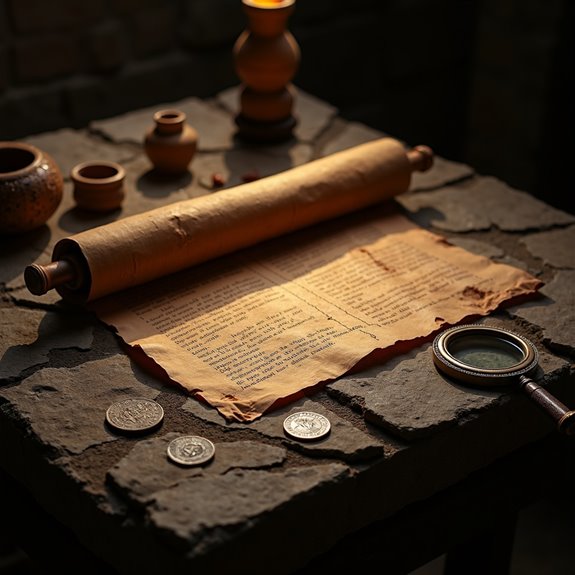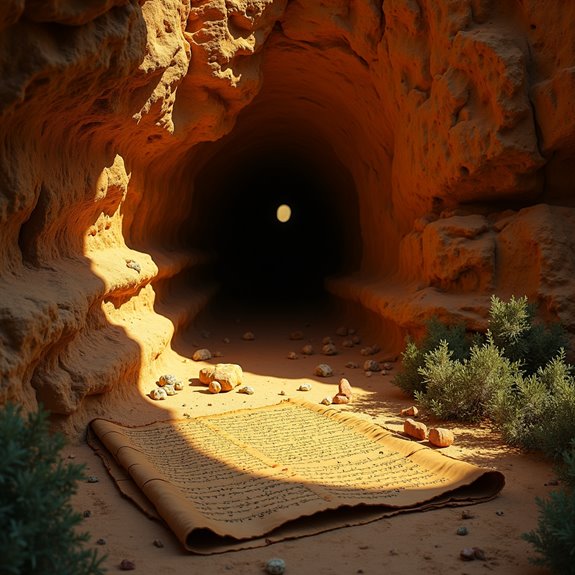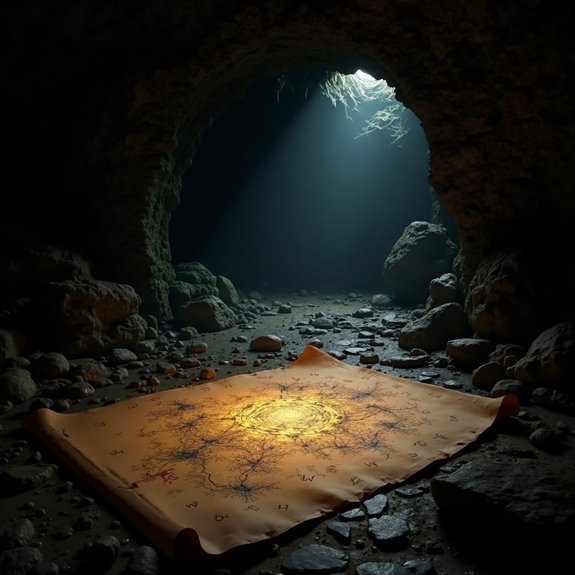The Copper Scroll Treasure Mystery
The Copper Scroll Treasure Mystery fascinates both scholars and treasure seekers alike. This enigmatic artifact, discovered among the Dead Sea Scrolls, hints at hidden wealth buried long ago in the Judean Desert. Its detailed descriptions of locations and valuable treasures have sparked numerous expeditions. Yet, as researchers attempt to decode its messages, lingering questions about the scroll’s origins and the treasures’ ultimate fate remain. What secrets does the desert still hold?
Introduction

In a world filled with ancient mysteries, the Copper Scroll stands out as one of the most fascinating relics of the past. Discovered in the Qumran caves near the Dead Sea, this unique artifact differs from other biblical texts. While the Dead Sea Scrolls contain religious writings, the Copper Scroll offers tantalizing clues about hidden treasures, likely from the Second Temple period. Its content describes various locations and amounts of gold and silver buried throughout the region, intriguing historians and treasure hunters alike. The scroll’s metal composition adds further weight to its significance, making deciphering its message a challenging yet rewarding endeavor. As scholars continue exploring its secrets, the mystery of the Copper Scroll continues to inspire curiosity and speculation.
Dead Sea Scrolls Discovery

The discovery of the Dead Sea Scrolls in the late 1940s marked a pivotal moment in biblical archaeology. Found in caves near the Dead Sea, these manuscripts revealed ancient texts dating back to the third century BCE. A group of Bedouin shepherds stumbled upon the scrolls, which contained portions of the Hebrew Bible, commentaries, and original writings from the Jewish sect known as the Essenes. Scholars quickly recognized their significance, as they provided unprecedented insights into early Judaism and the context of early Christianity. Over the next several years, archaeologists and researchers meticulously studied the scrolls, uncovering layers of history that reshaped understanding of biblical texts and highlighted the region’s cultural richness. The scrolls remain an invaluable treasure trove for historians.
Notable Cases or Sightings

Fascination surrounds the infamous Copper Scroll, one of the most intriguing artifacts among the Dead Sea Scrolls. Numerous treasure hunters have initiated quests to uncover the riches mentioned within its enigmatic text. In 1956, a group of archaeologists led by Father Roland de Vaux explored the Qumran caves, hoping to decipher its secrets. Rumors of illicit treasure maps surfaced in the 1980s, igniting further expeditions across the Judean Desert. A notable discovery occurred in 2003 when an amateur treasure seeker stumbled upon ancient coins believed to be related to the scroll. Sightings of unusual markings on stones and hidden caves continue to spark interest, leading adventurers to believe that the Copper Scroll’s treasures may still be buried, waiting to be unearthed.
Common Theories or Explanations
Though opinions vary widely, several common theories attempt to explain the meaning and potential locations of the treasures outlined in the Copper Scroll. Some researchers suggest the treasures might be hidden in the caves of the Judean Desert, while others believe they were buried within the ruins of ancient temples, like the Temple of Jerusalem. A prominent theory posits that the treasures were buried shortly before the Roman siege of Jerusalem, intended to protect them from falling into enemy hands. Additionally, some scholars argue the scroll’s inscriptions could reference a coded map, leading treasure seekers to specific sites. Ultimately, the mystery of the Copper Scroll continues to captivate archaeologists and adventurers alike, spurring ongoing exploration and debate.
Frequently Asked Questions
What Is the Historical Significance of the Copper Scroll?
The copper scroll holds historical significance as it offers insights into ancient Jewish practices and treasures, revealing details about sacred artifacts and potential hidden wealth, highlighting the cultural and religious context of its time.
How Does the Copper Scroll Differ From Other Dead Sea Scrolls?
The Copper Scroll differs from other Dead Sea Scrolls by being a list of hidden treasures rather than religious texts. It’s written on metal rather than parchment, showcasing unique preservation techniques and content focus.
Who Discovered the Copper Scroll Originally?
In 1952, an archaeological team led by John Allegro discovered the Copper Scroll in a cave near Qumran. They found it alongside other scrolls, but its unique metal composition set it apart from the rest.
What Materials Were Used to Create the Copper Scroll?
The Copper Scroll was made from pure copper, rolled and inscribed with Hebrew text. Its durability, unlike papyrus or parchment, helped preserve its contents, allowing scholars to study its unique inscriptions and historical significance.
Are There Any Recent Excavations Related to the Copper Scroll?
Recent excavations haven’t yielded new finds directly tied to the copper scroll. However, archaeologists continue to explore related sites, hoping to uncover artifacts that might provide insight into the scroll’s origins and possible treasure locations.


